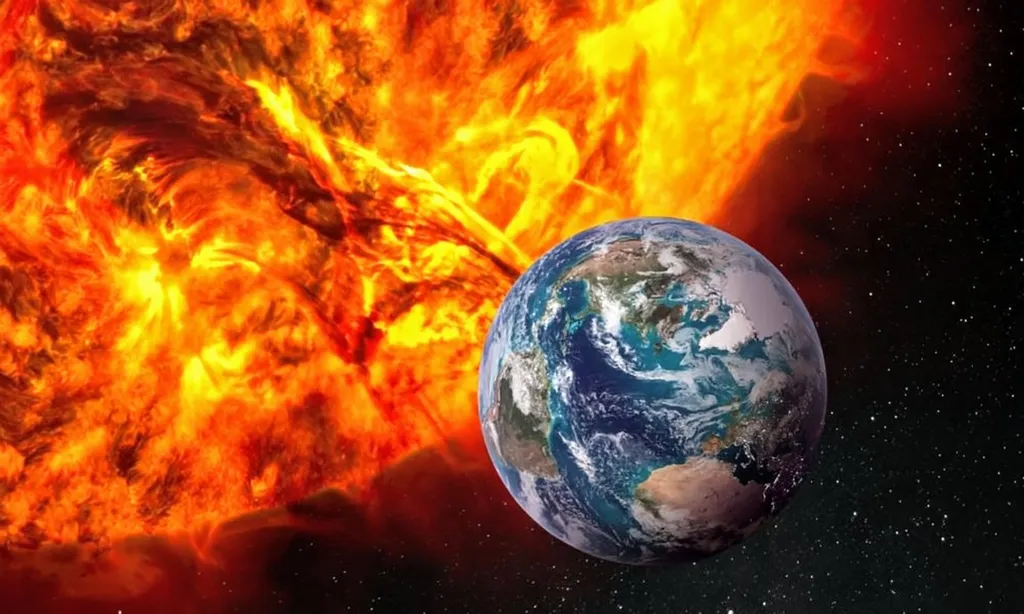Researchers from the University of Delaware, NASA Goddard Space Flight Center, and the Johns Hopkins University Applied Physics Laboratory have published a study in the Astrophysical Journal that sheds new light on the turbulence in the Sun’s photosphere, which is the outermost layer of the Sun from which light is emitted. This research is led by Rohit Chhiber, a postdoctoral researcher at the University of Delaware, and includes contributions from Raphael Attie, William H. Matthaeus, Sohom Roy, and Barbara J. Thompson.
The study focuses on the fluctuations in the Sun’s photospheric magnetic field, which are the primary source of turbulence that can heat and accelerate the solar atmosphere. This turbulence plays a crucial role in the production and evolution of the solar wind that permeates the heliosphere, the vast region of space influenced by the Sun. Understanding these fluctuations is essential for improving our knowledge of solar turbulence and providing observational constraints for models that describe turbulence transport from the Sun’s photosphere into its atmosphere.
The researchers employed magnetogram data from the Helioseismic and Magnetic Imager on the Solar Dynamics Observatory to characterize an ensemble of spatial autocorrelation functions (ACFs) of turbulence in the photosphere. They found that the two-point ACFs satisfy the similarity-decay hypothesis of von Kármán and Howarth, a fundamental property of turbulent systems. This means that rescaling the ACFs by their respective energies and correlation lengths yields a quasi-universal exponential form.
The study also revealed that the probability distribution function of transverse correlation lengths (λ) is approximately log-normal, which is consistent with observations of turbulence in the solar wind. The researchers presented a “mosaic” of the spatial distribution of λ over the photosphere, showing that the “quiet Sun” tends to have λ around 1500 kilometers, close to the scale of solar granulation. However, systematically longer lengths are associated with active regions.
A positive correlation was observed between the mean magnetic field magnitude and λ, and empirical fits quantify this relationship. These findings improve our understanding of solar turbulence and provide valuable observational constraints for models that describe turbulence transport from solar and stellar photospheres into their atmospheres.
For the energy industry, this research is particularly relevant as it enhances our understanding of the solar wind and its interactions with the Earth’s magnetosphere. This knowledge can help in predicting space weather events, which can have significant impacts on power grids, satellite communications, and other energy infrastructure. By improving our ability to forecast these events, we can better protect our energy systems from potential disruptions caused by solar activity.
Source: Chhiber, R., Attie, R., Matthaeus, W. H., Roy, S., & Thompson, B. J. (2023). von Kármán-Howarth Similarity of Spatial Correlations and the Distribution of Correlation Lengths in Solar Photospheric Turbulence. The Astrophysical Journal, 944(1), 12.
This article is based on research available at arXiv.

